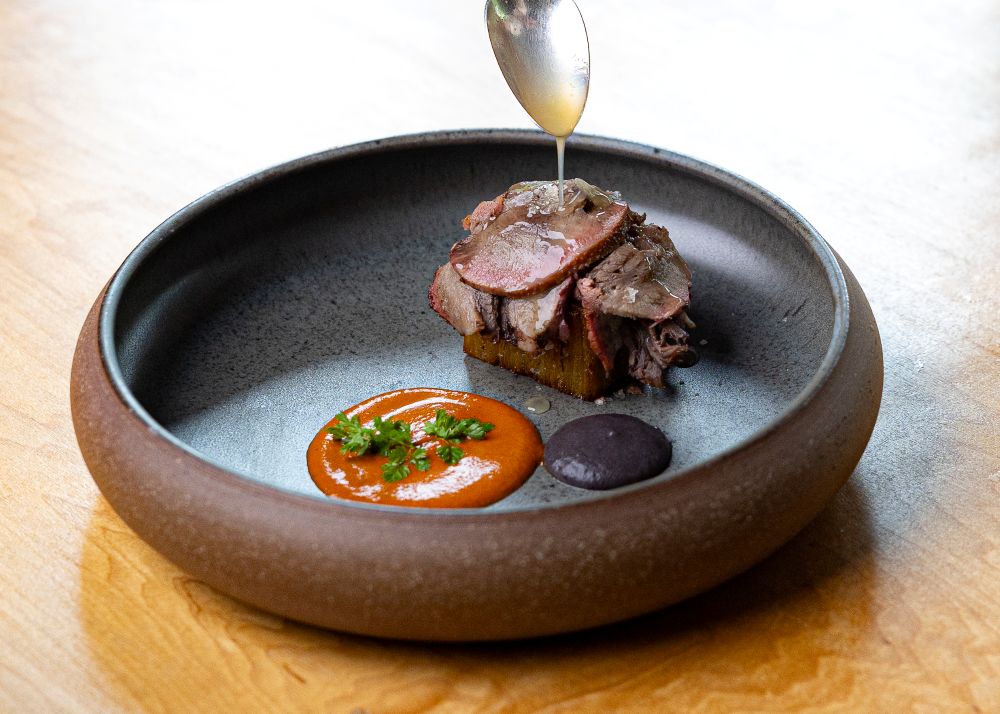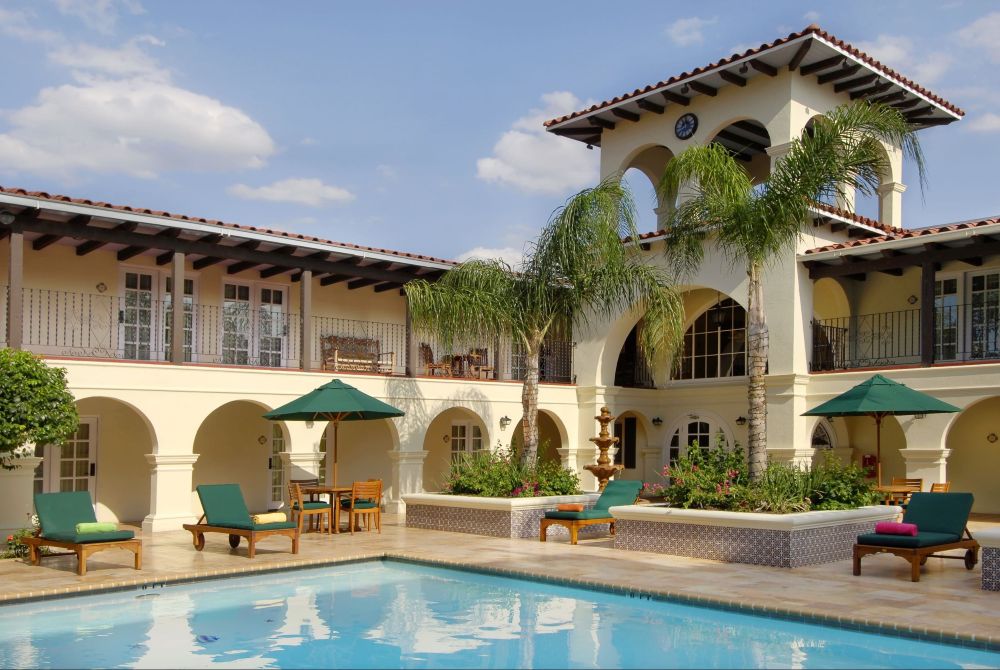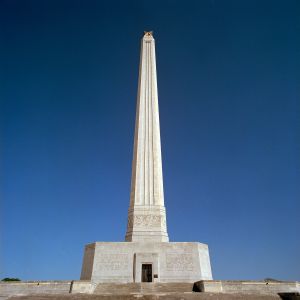San Antonio's Witte Museum is celebrating history—and making its own—in a variety of ways this year and in 2026.
Founded in 1926 with a focus on South Texas nature, science and culture, the Witte turns 100 next year. Set in a leafy 10-acre park-like campus on the banks of the San Antonio River, the Witte is an old hand at meetings and events. Evocative indoor and outdoor options for up to 1,500 guests include event halls, a native plant garden, covered courtyard and Spanish Colonial buildings.
Exemplifying the Witte’s core mission of inspiration and transformation is the permanent People of the Pecos Gallery, a moving depiction of the hunter-gatherers who inhabited the Lower Pecos Canyonlands three hours west of present-day San Antonio more than 9,000 years ago.
The Witte’s association with the Lower Pecos dates to archaeological expeditions in 1931. Today, Curator of Archeology Dr. Harry Shafer and other staff members lead rock art tours in the rugged region, including the ancient cave mural in the museum’s White Shaman Preserve. Offered Saturdays from September through May, the two-hour experience is popular with corporate, educational and other groups of 10 to 25 people.
And in February 2025, Dr. Michelle Cuellar Everidge became the first Latina to lead San Antonio’s Witte Museum as the beloved local institution’s new CEO and president, making history itself.
The Witte is just one example of how South Texas locales can enhance meetings with rich historical experiences. Spanning more than 11,000 years of human history, from the first Native Americans through Spanish colonization, Mexican sovereignty and the Texas Revolution, South Texas offers profound encounters with the past at every turn. In the region’s major group centers, water and war are common touchpoints.
San Antonio’s Feast for the Senses

Founded in 1718 as San Antonio de Béxar Presidio, Texas’s second-largest city is a vibrant weave of Native American, Spanish, Mexican and German cultures.
Forming the UNESCO World Heritage-designated San Antonio Missions National Historical Park, the city’s five 18th-century Spanish mission complexes include Mission Valero, or The Alamo (1724). Slated for 2027, the sacred site is being reimagined as the Alamo Visitor Center and Museum with event space, rooftop dining and other attractions.
Named America’s second UNESCO Creative City of Gastronomy in 2017, San Antonio is renowned as the Culinary Capital of Texas. Heritage is a key ingredient in most kitchens around town, including Mixtli.
Pronounced “meesh-lee” and Aztec for cloud, this event-capable Southtown hot spot won a Michelin star in the guide’s Texas debut last year. Chef-owners Diego Galicia and Rico Torres celebrate Mexican cuisine from across the ages with changing tasting menus such as the “La Conquista: 1519,” charting an ancient culinary journey from Spain to the Yucatan.
[Related: How This Omni Catering and Conferencing Star Builds Success in San Antonio]
Laredo’s Long Traditions

Founded in 1755, Laredo is another callback to Spanish Empire days. Located on the banks of the Rio Grande River across from Nuevo Laredo, Mexico, “The Gateway City” officially joined the U.S. in 1848. Home of America’s largest inland port, Laredo has been a center of trade and cultural exchange for three centuries.
While Texas has flown under six flags, Laredo can claim seven, including serving as the capital of the short-lived Republic of the Rio Grande in 1840. Housed in the former capitol building, The Republic of the Rio Grande Museum features the history of this breakaway nation, which lasted for only 283 days, and incorporates an authentic 1830s Laredo home.
Located in the San Agustín de Laredo Historic District across from the San Agustín Cathedral and time capsule San Agustín Plaza, this state landmark resides on the grounds of La Posada Hotel. This AAA Four Diamond cluster of historic buildings from the late 1800s on the banks of the Rio Grande offers 206 rooms and 15,000-plus square feet of flexible indoor and outdoor space for conventions, meetings and social events. Unique venues include ballrooms in a former 19th-century convent.
The Heights of History in Houston

In April 1836, Gen. Sam Houston won Texas' independence from Mexico at the Battle of San Jacinto. That August, Augustus and John Allen, New York-born brothers and land speculators, founded Houston on the banks of Buffalo Bayou.
Today, their "great center of government and commerce" is a powerhouse group nexus anchored by the George R. Brown Convention Center. The 1.8-million-square-foot venue has announced a phased $2 billion transformation for next year.
Historic landmarks stand tall and proud amid Houston’s modern skyline. Rising 567 feet, the San Jacinto Monument is the world’s tallest war memorial and star attraction at the San Jacinto Museum and Battlefield, which commemorates “the 18-minute battle that changed the course of history.” Versatile rentals include the 500-capacity outdoor Monument Terrace.
Smithsonian-affiliated Space Center Houston soars as a museum and entertainment complex, offering multiple inspiring spaces for intimate and large-scale gatherings.
The 1940 Air Terminal Museum is an Art Deco time capsule formerly serving as Houston’s municipal airport. Encompassing 21 diverse institutions, the Houston Museum District includes the moving Buffalo Soldiers National Museum, dedicated to the history of African American soldiers in the U.S. military.
Galveston’s Galvanizing Glories
My recent tour of Galveston’s historic seaport included the buyout-capable Ocean Star Offshore Drilling Rig & Museum, repurposing a former jack-up rig and the three-masted 1877 Tall Ship Elissa. Both offered views across Galveston Bay of the dry-docked USS Texas.
Commissioned in 1914, the mighty battleship served in both world wars, with Iwo Jima and Normandy among her five battle stars in the latter. Currently halfway through a $15 million restoration, she will join Galveston’s harbor-front venues as a museum ship with state-of-the-art attractions.
Named for Spanish Colonial Gov. Bernardo de Galvez, Galveston was founded two years after Houston. Heritage gems include the Spanish Mission-style Hotel Galvez from 1911, which relaunched in 2023 as the 219-room Grand Galvez with nearly 11,500 square feet of elegant space.
Orphaned two years after his family’s arrival in the late 1800s, Italian immigrant San Giacinto Gaido survived by working in Galveston restaurants. In 1911, he opened his namesake sandwich shop that in 1920 became the city’s first seafood restaurant.
One of six national recipients of the James Beard America’s Classics award for 2025, fourth generation, family-run Gaido’s excels in fresh Gulf-caught fare, old-school service and versatile venues for up to 300 people, including the historic Pelican Club.
[Related: A Journey Through the Texas Gulf Coast Reveals Compelling Group Options]
Coastal Captivations in Corpus Christi
Legend holds that on the Roman Catholic Feast Day of Corpus Christi (“Body of Christ”) in 1519, Spanish explorer Alonzo Alvarez de Pineda discovered a semi-tropical bay on the southern coast of the future Texas. Founded as a frontier trading post in 1838, the locale was named Corpus Christi around 1847.
Today, the largest city of the Texas Coastal Bend is home to the sixth-largest port in the nation and a mix of industries, including tourism, healthcare, retail, education, shipping, petrochemicals and agriculture that bring group business to the integrated venues of the American Bank Center.
The city’s anchoring maritime and military history converge at the USS Lexington Museum. Commissioned in 1943 as the U.S. Navy’s full-sized fleet carrier, the legendary “Blue Ghost” served magnificently in the Pacific during World War II before becoming a naval museum ship in 1992.
Along with guided and self-guided tours, planners have 40,000-plus square feet of versatile space for up to 2,600-capacity events. Now in the soft launch phase, “Women in the Navy” is a major new onboard exhibition celebrating a century-plus of women naval pioneers and leaders.






